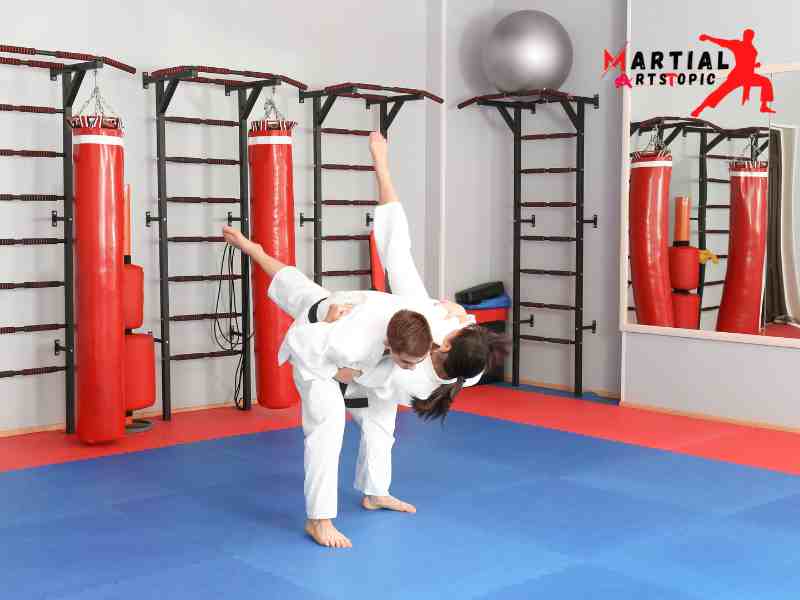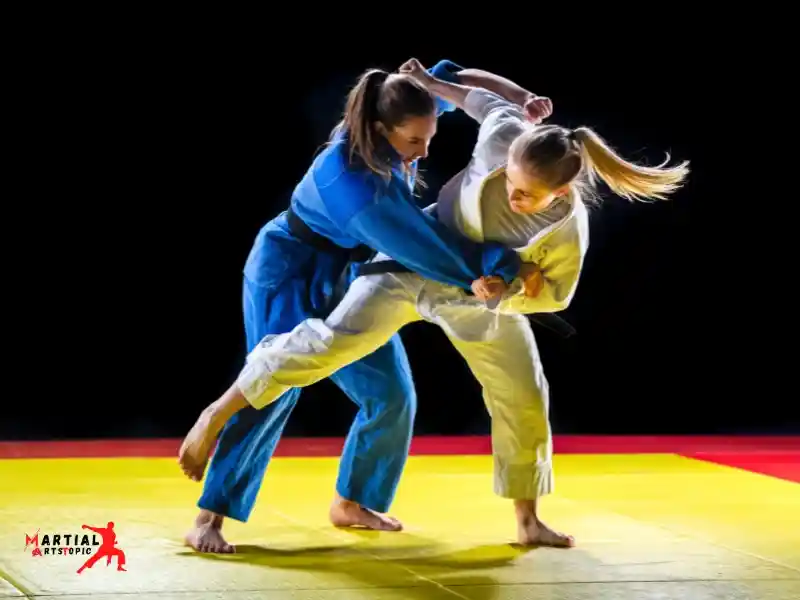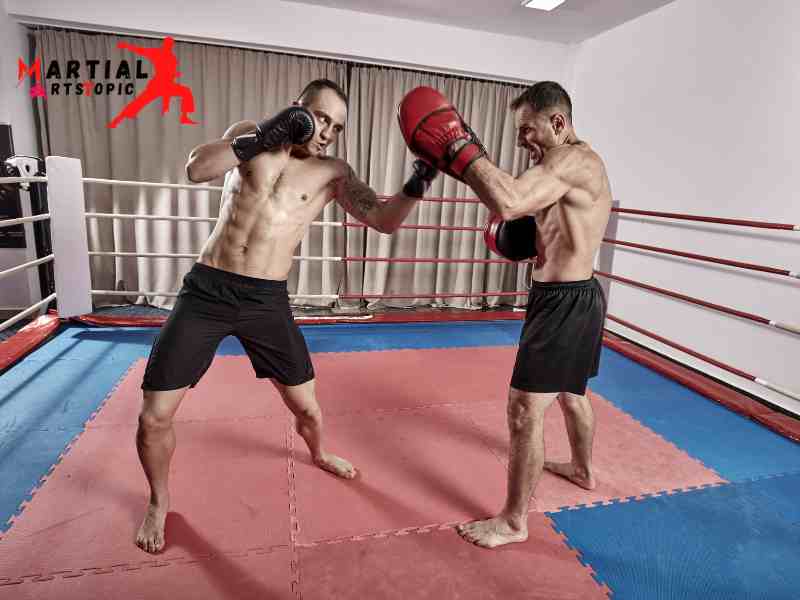
The Different Styles and Techniques in Sambo
The Diverse Styles and Techniques of Sambo. Sambo is a martial art with a rich history and a wide range of styles and techniques. From its origins in Russia to its global influence today, Sambo has captivated martial arts enthusiasts with its unique blend of grappling, striking, and self-defense techniques. The various styles and techniques within the world of Sambo, shedding light on the diversity and complexity of this fascinating martial art.
Sambo: A Brief Overview
Before we explore the different styles and techniques of Sambo, let’s take a moment to understand what Sambo is all about. Sambo, which stands for “self-defense without weapons” in Russian, is a versatile martial art that encompasses both sport and self-defense aspects. Developed in the early 20th century, Sambo draws influence from various martial arts, including judo, wrestling, and traditional Russian folk wrestling.
Styles of Sambo

Sambo encompasses a range of styles, each with its own unique characteristics and emphasis. Some of the prominent styles of Sambo include:
- Sport Sambo: This style of Sambo focuses on competitive grappling and incorporates throws, joint locks, and ground fighting techniques. Sport Sambo competitions emphasize technical skill, strategy, and athleticism, making it a thrilling spectator sport.
- Combat Sambo: As the name suggests, Combat Sambo places a strong emphasis on practical self-defense and combat techniques. It combines elements of striking, grappling, and defense against armed opponents, making it a comprehensive and effective martial art for real-life situations.
- Freestyle Sambo: This style of Sambo encourages creativity and adaptability, allowing practitioners to explore a wide range of techniques and strategies. Freestyle Sambo competitions often feature a diverse array of techniques, showcasing the dynamic nature of this martial art.
Techniques for Sambo
Within the various styles of Sambo, practitioners can explore an extensive repertoire of techniques. Some of the key techniques in Sambo include:
- Throws and Takedowns: Sambo places a strong emphasis on dynamic throws and takedowns, utilizing leverage, timing, and momentum to off-balance and control opponents.
- Joint Locks and Submissions: Practitioners of Sambo are adept at applying joint locks, such as armlocks and leglocks, to immobilize and submit their opponents.
- Ground Fighting: Sambo incorporates ground fighting techniques, including pins, transitions, and submissions, allowing practitioners to dominate their opponents in close-quarters combat.
- Striking and Defense: While Sambo is renowned for its grappling techniques, certain styles incorporate striking and defensive tactics, equipping practitioners with a well-rounded skill set for both sport and self-defense scenarios.
What is Sambo?
What is Sambo? Sambo is a dynamic and versatile martial art that originated in Russia. It combines elements of judo, wrestling, and other grappling techniques to create a well-rounded combat system. Sambo emphasizes both standing and ground fighting, making it a comprehensive martial art for self-defense and competition. With a focus on practicality and effectiveness, Sambo training incorporates throws, joint locks, and submissions, providing practitioners with the skills to handle a variety of combat scenarios. Whether you’re interested in developing self-defense abilities or exploring a new martial art, Sambo offers a unique and challenging experience for practitioners of all levels.
Origins and History of Sambo
The origins and history of Sambo are a fascinating journey that takes us back to Russia, where this martial art has deep roots. Developed as a means of self-defense and combat training, Sambo has developed into a respected martial art with a rich history and significance. Let’s delve into the origins, development, and evolution of Sambo as a martial art.
Origins in Russia
Sambo, which stands for “self-defense without weapons” in Russian, has its origins in the early 20th century. It was initially developed for the military as hand-to-hand combat training. The goal was to create an effective system that could be used in real-life combat situations, emphasizing practicality and efficiency.
Development of Sambo as a Martial Art
Over time, Sambo expanded beyond its military roots and became popular as a sport and self-defense for civilians. It combines elements of judo, wrestling, and other martial arts, incorporating both standing and ground fighting techniques. This diverse blend of influences has contributed to the unique and versatile nature of Sambo as a martial art.
Definition of Sambo
Sambo is a dynamic martial art that encompasses a wide range of techniques, including throws, takedowns, joint locks, and submissions. It emphasizes the use of leverage and technique to overcome opponents, making it suitable for practitioners of all ages and body types. With a focus on both striking and grappling, Sambo offers a comprehensive approach to combat and self-defense.
Evolution of Sambo as a Martial Art

As Sambo gained recognition worldwide, it continued to develop and adapt to modern training methods and competitive formats. International organizations were established to govern and promote the sport, leading to the inclusion of Sambo in prestigious competitions such as the World Sambo Championships and the Asian Games.
The history of Sambo is a testament to its enduring appeal and practicality as a martial art. Its evolution from a military combat system to a global sport reflects its adaptability and relevance in contemporary society. Whether practiced for self-defense, physical fitness, or competitive sports, Sambo continues to attract enthusiasts from all walks of life.
Importance of Sambo in Martial Arts
Sambo’s influence in the world of martial arts cannot be overstated. Its emphasis on practical self-defense techniques and its adaptability to different combat situations make it a valuable addition to any martial artist’s repertoire. Additionally, the competitive aspect of Sambo has contributed to its popularity, with athletes showcasing their skills in high-level tournaments and championships.
Understanding Sambo Techniques
What is Sambo? Sambo is a dynamic martial art that encompasses a wide range of techniques, making it a versatile and effective combat system. Understanding Sambo techniques involves grasping the fundamentals of throws, joint locks, and ground fighting, as well as the strategic application of these skills in a variety of scenarios. Whether you’re interested in sport Sambo or self-defense, mastering the nuances of Sambo techniques can greatly enhance your martial arts proficiency. From the fluidity of transition moves to the precision of submission holds, Sambo offers a comprehensive arsenal for practitioners to explore and refine. As you delve into the world of Sambo, you’ll discover the intricacies of its techniques and the strategic advantages they provide in combat situations.
Fundamental Sambo Techniques
One of the defining features of Sambo is its emphasis on versatility and adaptability. Sambo practitioners are trained in a wide range of techniques, including throws, joint locks, and ground fighting. The sport variation of Sambo also incorporates striking techniques, making it a well-rounded martial art.
- Throws: Sambo places a strong emphasis on throwing techniques, which are designed to off-balance and incapacitate opponents. Practitioners learn to execute dynamic throws with precision and speed, leveraging their opponent’s momentum to gain the upper hand.
- Joint Locks: Sambo incorporates a variety of joint locks, focusing on manipulating the opponent’s limbs to control and immobilize them. These techniques are effective in subduing opponents without causing serious injury.
- Ground Fighting: Sambo practitioners are skilled in ground fighting, utilizing grappling and submission techniques to gain dominance over their opponents. This aspect of Sambo is particularly valuable in real-life self-defense situations.
- Striking Techniques: In the sport variation of Sambo, practitioners are also trained in striking techniques, including punches, kicks, and knee strikes. This adds another layer of versatility to the art, allowing practitioners to adapt to different combat scenarios.
Benefits of Learning Sambo Techniques
Learning Sambo techniques offers a multitude of benefits for practitioners of all levels. From physical fitness to self-defense skills, Sambo provides a holistic approach to martial arts training.
- Physical Fitness: Sambo training is physically demanding, promoting strength, agility, and cardiovascular endurance. Practitioners can expect to improve their overall fitness levels while honing their martial arts skills.
- Self-Defense: The practical nature of Sambo techniques makes it an effective self-defense system. Whether facing a single opponent or multiple attackers, Sambo equips practitioners with the skills to protect themselves in real-life situations.
- Mental Discipline: Training in Sambo requires focus, discipline, and perseverance. Practitioners develop mental fortitude and resilience, which can be applied to various aspects of life beyond the martial arts studio.
- Inclusivity: Sambo welcomes practitioners of all ages, genders, and body types. Its diverse range of techniques allows individuals to find their own unique expression within the art, fostering a sense of inclusivity and community.
Training in Sambo

When it comes to training in Sambo, it’s important to focus on developing a well-rounded skill set that encompasses both grappling and striking techniques. Sambo, a dynamic martial art with roots in Russia, emphasizes versatility and adaptability in combat situations. Training sessions typically include drills for takedowns, joint locks, and ground fighting, as well as striking combinations. Practitioners also benefit from learning how to effectively defend against various types of attacks. To excel in Sambo, consistent practice, discipline, and a willingness to push personal boundaries are essential. Whether you’re a beginner or an experienced martial artist, Sambo training offers a unique and enriching experience that promotes physical fitness, mental resilience, and practical self-defense skills.
- Focus on Technique: In Sambo, technique is paramount. Spend ample time refining your fundamental moves, such as throws, takedowns, and ground grappling techniques. Emphasize proper body mechanics and leverage to execute each technique with precision.
- Conditioning and Endurance: Sambo demands physical strength and endurance. Incorporate strength training, cardio exercises, and flexibility drills into your routine to improve your overall fitness level. This will enhance your stamina and resilience during intense training and competitions.
- Sparring and Live Drills: Engage in regular sparring sessions and live drills with training partners of varying skill levels. This hands-on approach allows you to apply techniques in real-time scenarios, sharpening your reflexes and decision-making abilities.
- Mental Preparation: Develop a focused and resilient mindset. Visualize successful execution of techniques, cultivate mental toughness, and stay composed under pressure. Mental preparation is just as crucial as physical training in Sambo.
- Study and Analyze: Dedicate time to study Sambo matches and instructional resources. Analyze the strategies and techniques employed by accomplished Sambo practitioners. This analytical approach can provide valuable insights to enhance your own skills.
- Cross-Training: Explore complementary disciplines such as judo, wrestling, and Brazilian Jiu-Jitsu to augment your Sambo training. Cross-training exposes you to diverse techniques and tactics, broadening your skill set and adaptability.
- Rest and Recovery: Prioritize adequate rest and recovery to prevent burnout and reduce the risk of injuries. Listen to your body and allow sufficient time for recuperation between training sessions.
- Seek Knowledgeable Coaching: Align yourself with experienced and knowledgeable Sambo coaches who can provide personalized guidance and constructive feedback. Quality coaching accelerates skill development and fosters a deeper understanding of Sambo principles.
- Competitive Exposure: Participate in Sambo competitions and friendly sparring sessions to test your skills in a competitive environment. The experience gained from these engagements is invaluable in honing your abilities and fostering a competitive spirit.
- Consistent Practice: Consistency is key to mastery. Dedicate regular, focused practice sessions to reinforce techniques, build muscle memory, and refine your overall Sambo proficiency.
Sambo in Competition and Self-Defense
Sambo is a versatile martial art that has gained popularity in both competitive arenas and self-defense applications. In competition, Sambo practitioners showcase their skills in a dynamic and high-energy environment, where agility, technique, and strategic thinking are key. Whether it’s the gripping exchanges of sport Sambo or the explosive throws of combat Sambo, the discipline offers a thrilling spectacle for both participants and spectators. Additionally, Sambo’s practical effectiveness in self-defense scenarios makes it a valuable asset for individuals seeking to enhance their personal safety. With its focus on both standing and ground combat, Sambo equips practitioners with the tools to defend themselves in real-life situations. Whether in the competitive arena or in the realm of self-defense, Sambo continues to captivate and empower individuals with its unique blend of athleticism and practicality.
Competitive Sambo Events
Competitive Sambo events are a thrilling showcase of skill, strength, and strategy. Athletes from around the world demonstrate their prowess in this multifaceted martial art, competing in various categories such as sport sambo, combat sambo, and freestyle sambo. The technical proficiency and agility displayed in these competitions are truly awe-inspiring.
In sport sambo, competitors engage in a dynamic blend of throws, ground fighting, and submissions, aiming to outmaneuver their opponents with precision and finesse. Combat sambo, on the other hand, emphasizes a more realistic approach, incorporating striking techniques alongside grappling and self-defense maneuvers. As for freestyle sambo, it combines elements of both sport and combat sambo, offering a well-rounded platform for athletes to exhibit their diverse skills.
Practical Applications for Self-Defense
Beyond the realm of competitive events, Sambo shines as a practical form of self-defense. Its focus on versatility and adaptability makes it a valuable asset in real-life scenarios. Sambo equips practitioners with a range of techniques, including throws, joint locks, and strikes, tailored to neutralize threats and protect oneself in unpredictable situations.
One of the key strengths of Sambo lies in its emphasis on defense against armed assailants. Training in Sambo instills the ability to disarm and subdue opponents wielding various weapons, empowering individuals to defend themselves with confidence and composure. Whether facing single or multiple attackers, the principles and techniques of Sambo provide a solid foundation for self-protection.
Sambo’s Influence in Mixed Martial Arts (MMA)

The influence of Sambo in mixed martial arts (MMA) cannot be overlooked. Renowned fighters have showcased the effectiveness of Sambo techniques in the octagon, integrating its throws, takedowns, and ground control into their fighting repertoire. Sambo’s contribution to MMA has enriched the sport, diversifying the range of styles and approaches employed by fighters.
The utilization of Sambo techniques in MMA has redefined grappling and ground fighting, contributing to the evolution of the sport. Its integration has led to the success of numerous fighters, highlighting the impact of Sambo on the competitive landscape of MMA. The art’s emphasis on fluidity and adaptability has resonated with practitioners and enthusiasts alike, further solidifying its significance in the realm of mixed martial arts.
Benefits of Practicing Sambo
The Incredible Benefits of Practicing Sambo: When it comes to martial arts, there are numerous disciplines to choose from, each with its own unique benefits. One such discipline that has been gaining popularity in recent years is Sambo. This dynamic and versatile martial art originated in Russia and has since spread around the world, captivating practitioners with its effectiveness and practicality.
So, what are the benefits of practicing Sambo? Let’s explore some of the remarkable advantages that this martial art has to offer.
- Self-Defense Skills: Sambo is renowned for its focus on practical self-defense techniques. The training emphasizes grappling, throws, and submissions, equipping practitioners with the ability to defend themselves in real-life situations. Whether you’re facing a standing threat or a ground-based confrontation, Sambo provides the tools to protect yourself effectively.
- Physical Fitness: Engaging in Sambo training is a fantastic way to improve your overall physical fitness. The rigorous workouts and drills involved in Sambo help to enhance strength, agility, endurance, and flexibility. As a result, practitioners experience a significant improvement in their cardiovascular health and muscular strength.
- Mental Toughness: Sambo requires a high level of mental toughness and resilience. Practitioners learn to push through challenges, overcome adversity, and maintain focus under pressure. These mental attributes cultivated through Sambo training can have a profound impact on all areas of life, fostering a resilient and determined mindset.
- Stress Relief: Like many forms of physical activity, Sambo provides an excellent outlet for stress relief. The intense training sessions can serve as a healthy way to release tension and unwind, contributing to improved mental well-being and overall stress management.
- Competitive Opportunities: For those who thrive in competitive environments, Sambo offers a platform for testing your skills in a controlled setting. Competing in Sambo tournaments not only provides a chance to showcase your abilities but also fosters camaraderie and fair play within the Sambo community.
- Full-Body Workout: Sambo training engages the entire body, making it a comprehensive form of exercise. From the explosive movements of throws to the intricate techniques of grappling, every aspect of the body is involved, leading to a well-rounded and balanced physical development.
- Practical Martial Arts Skills: Sambo’s focus on real-world applicability makes it a practical choice for those seeking effective self-defense skills. The techniques learned in Sambo are designed to be functional and efficient, ensuring that practitioners are well-prepared to handle physical confrontations.
Conclusion
What is Sambo? Sambo is a diverse and effective martial art that encompasses a wide range of techniques and principles. Its roots in Russia and its evolution into a respected combat sport have made it a popular choice for self-defense and competitive purposes. With its emphasis on grappling, striking, and self-defense, Sambo offers practitioners a well-rounded and practical approach to martial arts. Whether you’re a beginner or an experienced martial artist, Sambo provides valuable skills that can enhance your overall physical and mental well-being. Embracing the principles of discipline, respect, and perseverance, Sambo encourages personal growth and empowerment, making it a valuable addition to anyone’s martial arts journey.
